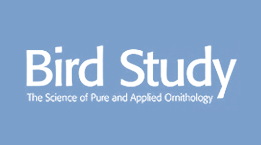Foraging behaviour of Razorbills Alca torda during chick-rearing at the largest colony in the Baltic Sea
Capsule: Foraging behaviour in the Razorbill Alca torda during breeding was similar to that found elsewhere, aside from dive shape.
Aims: To investigate the foraging behaviour of Razorbills during the breeding season at the largest colony in the central Baltic Sea.
Methods: A combination of global positioning system (GPS) and time-depth recorder (TDR) devices were used on Razorbills breeding on the island of Stora Karlsö, Baltic Sea, during the chick-rearing period.
Results: Five GPS tracks and nine TDR logs were retrieved from 12 Razorbills, and 7399 dives were analysed. Razorbills foraged south and southwest of the colony. Maximum and mean (±sd) foraging range from the colony was 72.7 km and 13.1 ± 13.5 km, respectively. Mean dive depth (15.3 ± 2.4 m) and duration (53.1 ± 8.5 s) were similar to those of a more southern Baltic Sea Razorbill colony. Dive depth had a bimodal distribution, with 70% of dives deeper than 10 m and 30% shallower than 10 m. There was a clear diel foraging pattern with 89% of dives occurring during daytime and a higher proportion of shallow dives at night. Unexpectedly, dives were primarily U-shaped. The Razorbills spent 31% of their overall time activity budget flying or diving.
Conclusion: Aside from dive shape, foraging behaviour was consistent with that reported at other colonies of Razorbills. Inconsistency in dive shape may be due to a bimodal foraging strategy, local prey behaviour or competition with the Common Guillemot Uria aalge.


